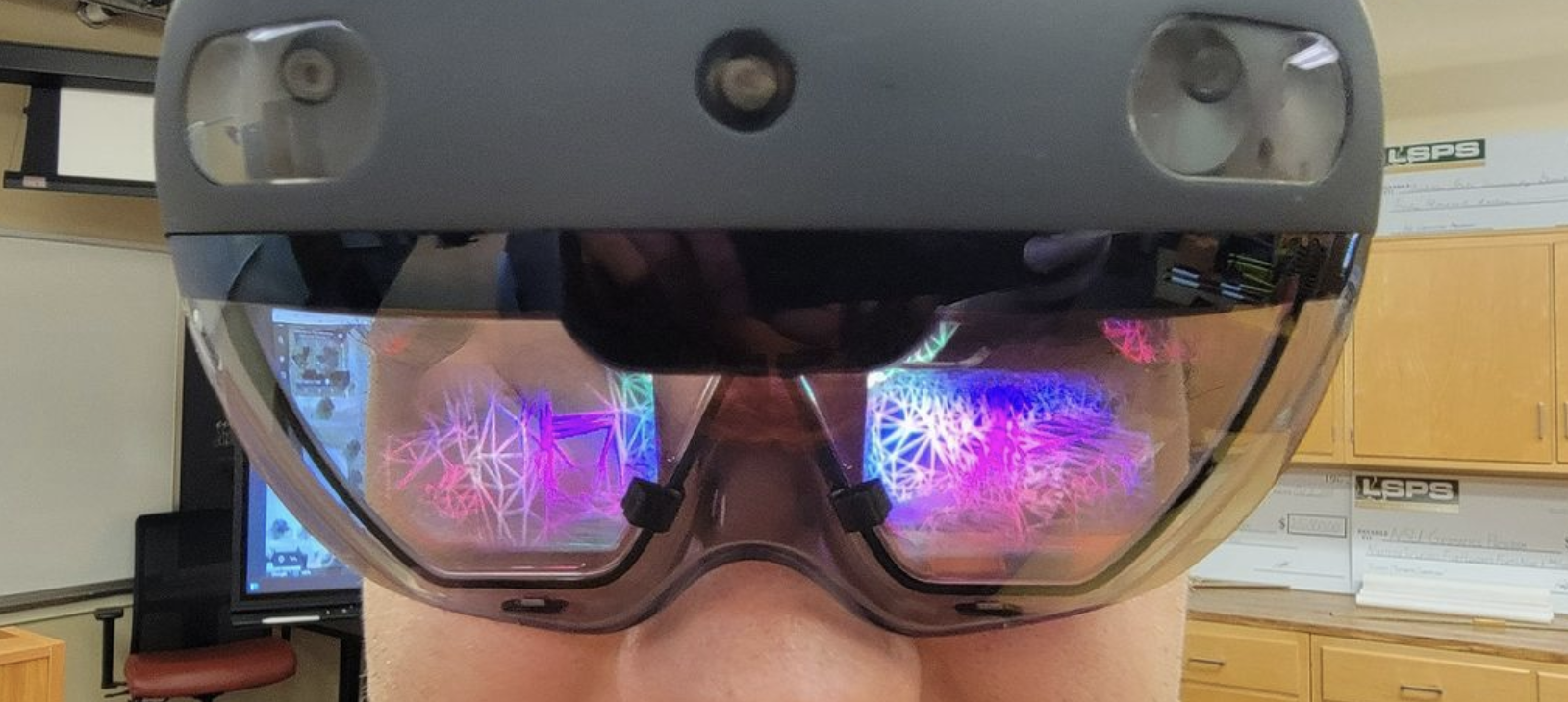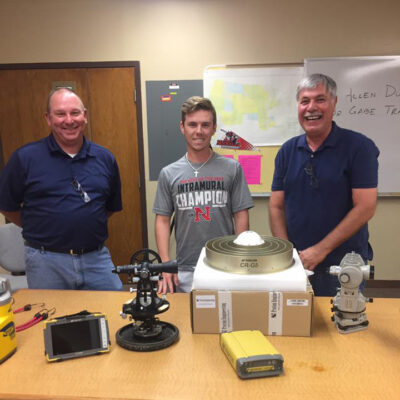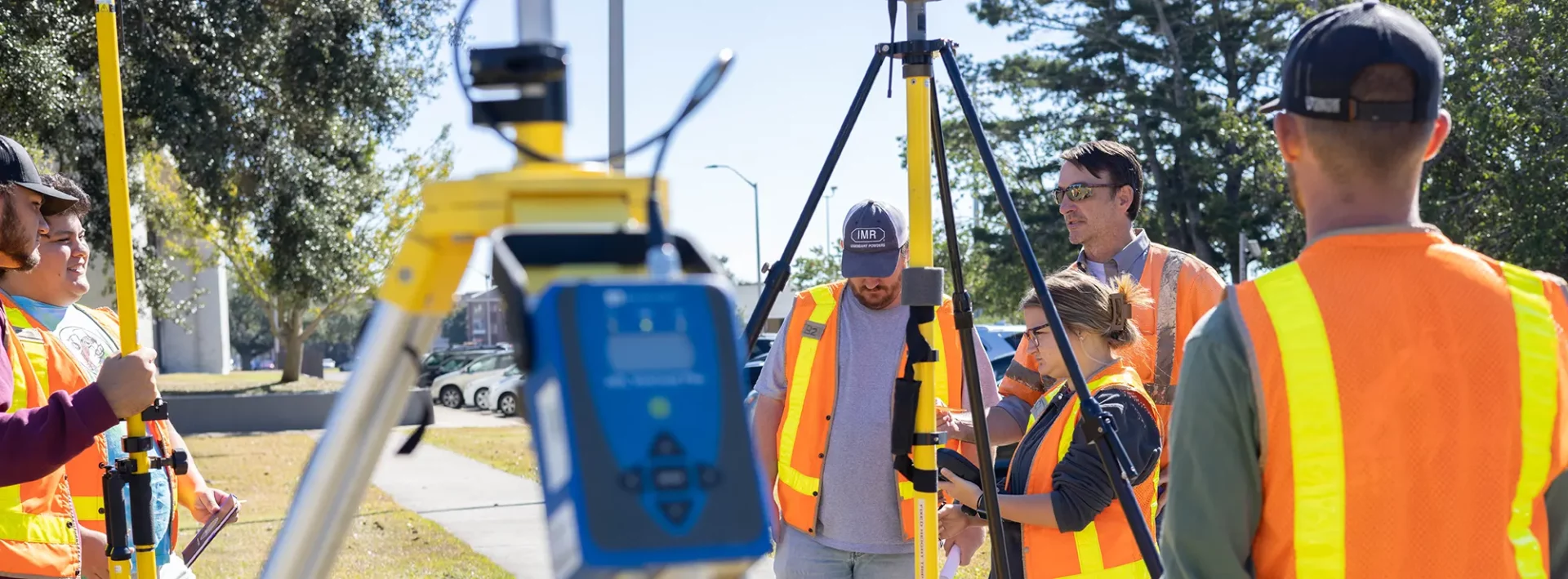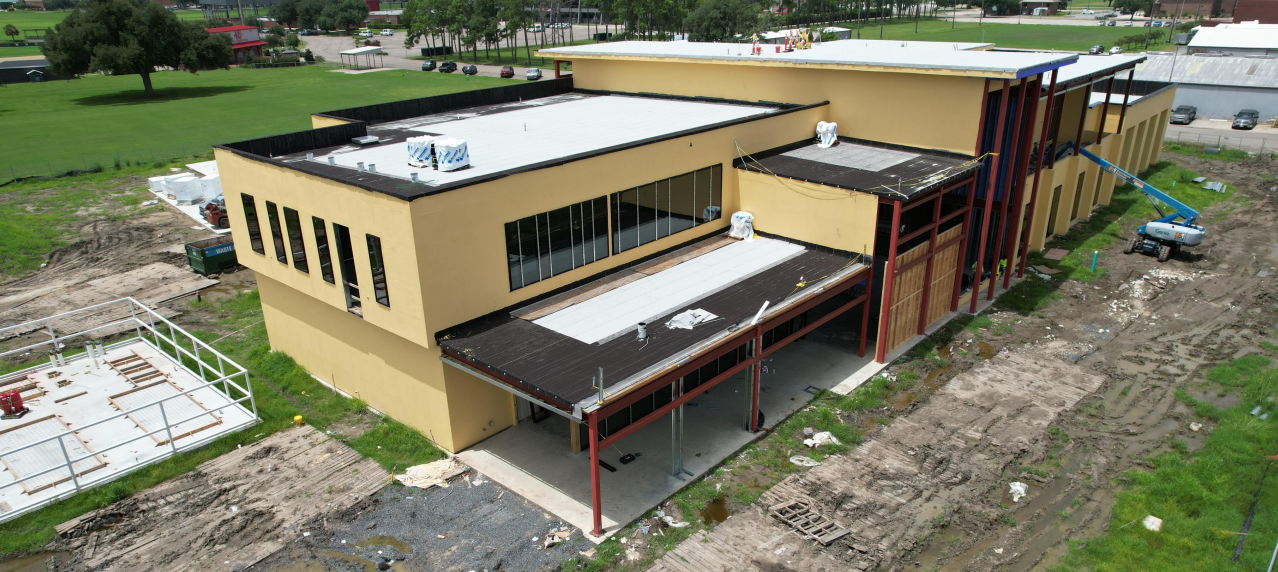CAREERS
The U.S. Department of Labor and Education lists geospatial technology as one of the top three emerging industries in the country.
Geomatics students acquire a broad technical background in land surveying and related geoscience disciplines. This coupled with on-the-job training through our internship program prepares students for a wide variety of technical positions in the local, state and national professional market where the current supply is less than 50 percent of the need.
New satellite technologies learned in the geomatics program can be applied to a multitude of fields. The petroleum industry uses the technology to locate and assess potential reservoirs of oil and natural gas. Energy companies lay out utilities. Police departments track crime areas. Highway engineers monitor traffic patterns. Cartologists produce maps. In a post-Katrina world, surveyors are also helping Louisiana rebuild and relocate levees, realign property boundaries and monitor the rapidly eroding coast and dwindling natural resources.
Your future career in geomatics.
Nicholls geomatics students are in high demand, often receiving multiple job offers before graduation. Louisiana workforce statistics show that at least 60 surveyors are needed each year, leading to many fast-advancement opportunities within the profession. Upon graduation, you’ll be prepared to register as a certified Professional Land Surveyor in Louisiana as well as pursue careers in:
• Cartography (map making)
• Construction
• Geographic Information System (GIS)
• Global Navigation Satellite Systems
• Homeland security and intelligence
• Hydrography (water mapping)
• Photogrammetry (measuring objects from photos)
• Remote sensing
• Terrestrial laser scanning
• Unmanned aerial systems (drones)
Career outlook
Data from bls.gov
| 2023 Median Pay | $99,510 per year $47.84 per hour |
|---|---|
| Typical Entry-Level Education | Bachelor’s degree |
| Work Experience in a Related Occupation | None |
| On-the-job Training | None |
| Number of Jobs, 2023 | 291,900 |
| Job Outlook, 2023-33 | 11% (Much faster than average) |
| Employment Change, 2023-33 | 32,100 |
 Mechanical engineers research, design, develop, build, and test mechanical and thermal sensors and devices, including tools, engines, and machines.
Mechanical engineers research, design, develop, build, and test mechanical and thermal sensors and devices, including tools, engines, and machines.
Mechanical engineers typically do the following:
- Analyze problems to see how mechanical and thermal devices might help solve a particular problem
- Design or redesign mechanical and thermal devices or subsystems, using analysis and computer-aided design
- Investigate equipment failures or difficulties to diagnose faulty operation and to recommend remedies
- Develop and test prototypes of devices they design
- Analyze the test results and change the design or system as needed
- Oversee the manufacturing process for the device
Mechanical engineering is one of the broadest engineering fields. Mechanical engineers design and oversee the manufacture of many products ranging from medical devices to new batteries.
Mechanical engineers design power-producing machines, such as electric generators, internal combustion engines, and steam and gas turbines, as well as power-using machines, such as refrigeration and air-conditioning systems.
Mechanical engineers design other machines inside buildings, such as elevators and escalators. They also design material-handling systems, such as conveyor systems and automated transfer stations.
Like other engineers, mechanical engineers use computers extensively. Mechanical engineers are routinely responsible for the integration of sensors, controllers, and machinery. Computer technology helps mechanical engineers create and analyze designs, run simulations and test how a machine is likely to work, interact with connected systems, and generate specifications for parts.
Career outlook
Data from bls.gov
| 2023 Median Pay | $99,510 per year $47.84 per hour |
|---|---|
| Typical Entry-Level Education | Bachelor’s degree |
| Work Experience in a Related Occupation | None |
| On-the-job Training | None |
| Number of Jobs, 2023 | 291,900 |
| Job Outlook, 2023-33 | 11% (Much faster than average) |
| Employment Change, 2023-33 | 32,100 |
Civil engineers plan, design, and supervise the construction and maintenance of building and infrastructure projects. These projects may include facilities, bridges, roads, tunnels, and water and sewage systems.
Civil engineers typically do the following:
- Analyze plans, survey reports, maps, and other data related to project design
- Consider regulations, site selection, and other factors relevant to a project
- Analyze the results of tests on soil and building materials to determine strength for foundations and other support
- Prepare cost estimates for equipment, materials, and labor to determine a project’s economic feasibility
- Use design software to plan transportation systems, hydraulic systems, and structures
- Submit permit applications to local, state, and federal agencies, as needed, and confirm that projects comply with regulations
- Perform or oversee surveying to establish building locations, site layouts, grades, and elevations to guide construction
- Manage the construction or repair, maintenance, and replacement of buildings and infrastructure
Career outlook
Data from bls.gov
| 2023 Median Pay | $95,890 per year $46.10 per hour |
|---|---|
| Typical Entry-Level Education | Bachelor’s degree |
| Work Experience in a Related Occupation | None |
| On-the-job Training | None |
| Number of Jobs, 2023 | 341,800 |
| Job Outlook, 2023-33 | 6% (Faster than average) |
| Employment Change, 2023-33 | 22,100 |
The Nicholls Advantage
Local Internships
As a geomatics student, you’ll learn about different measuring techniques and how to apply your knowledge to real-world projects. Our classes often include service-learning assignments, such as plotting crime trends for a police department, mapping the trash in a local bayou or monitoring an endangered bird’s habitat. You’ll also work with local firms and agencies while completing internships focused on conventional surveying and imaging technology. Outside of the classroom, you’ll have the opportunity to get involved with the student chapter of the Louisiana Society of Professional Surveyors.
Nicholls has the only geomatics program in the state. Because of our dedicated faculty, we have established strong industry partnerships, which allow our students to network with professionals and gain hands-on experience using some of the world’s newest technology. In the past five years, we’ve received nearly $3 million in research and equipment grants in addition to scholarships funds. We offer several scholarships for incoming and current students that range from $1,000 to $5,000.






